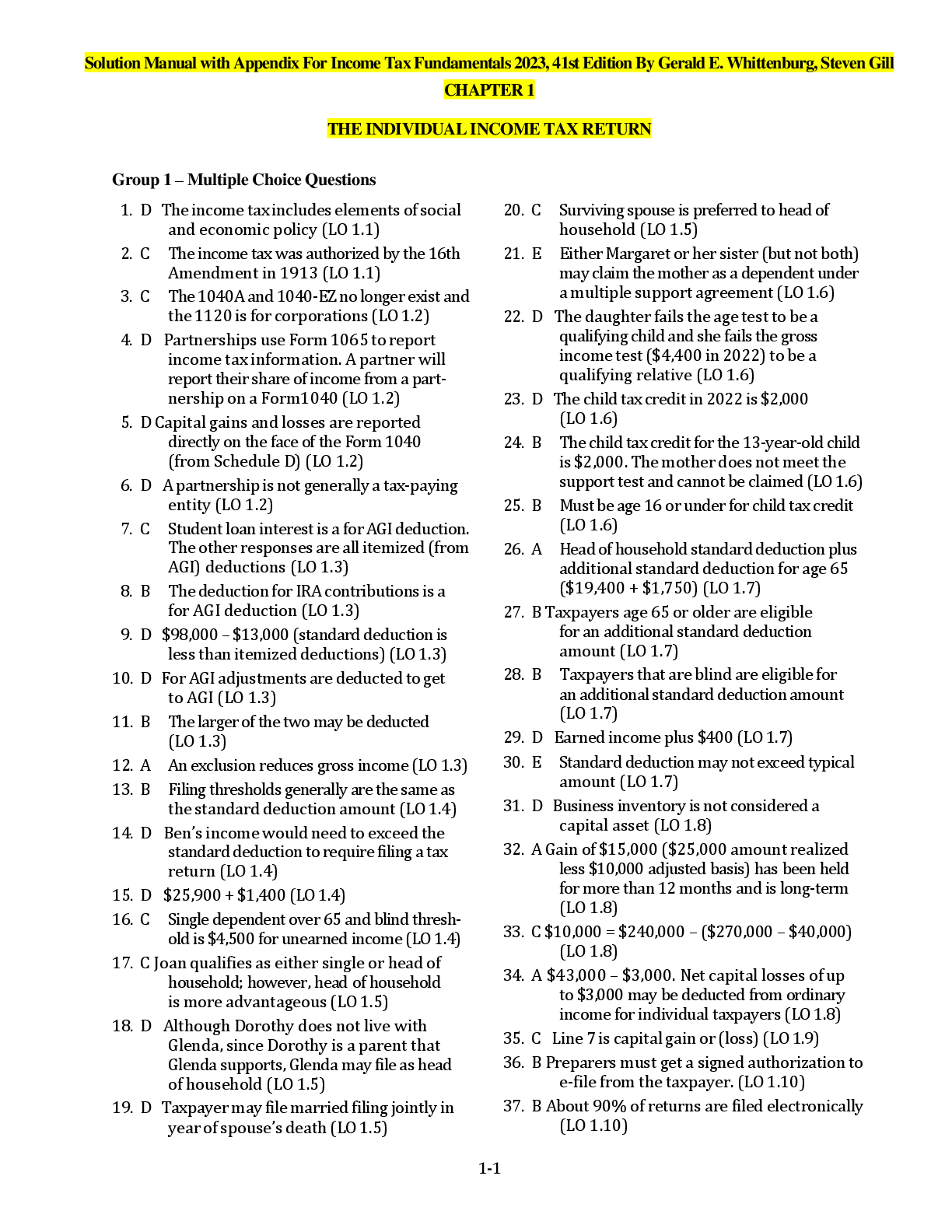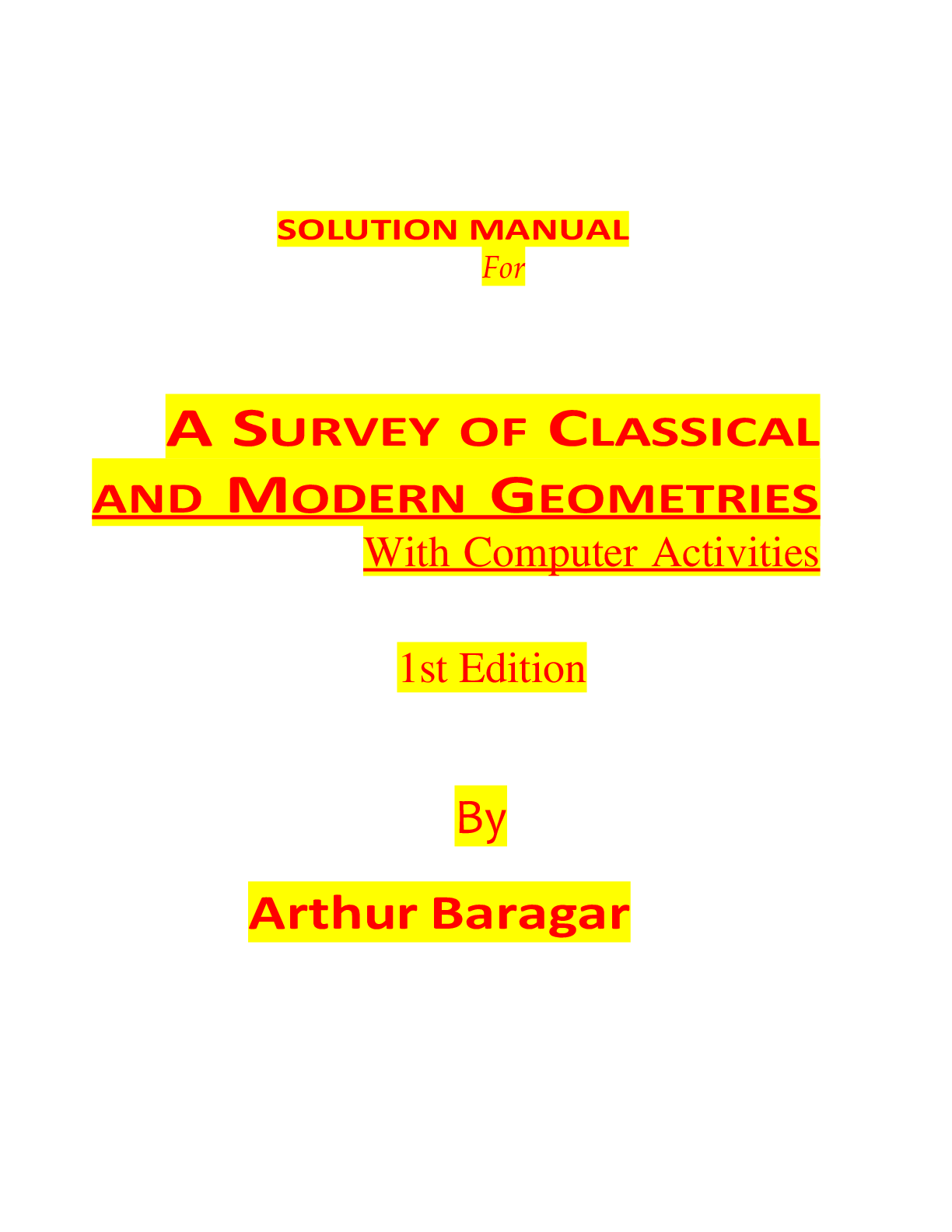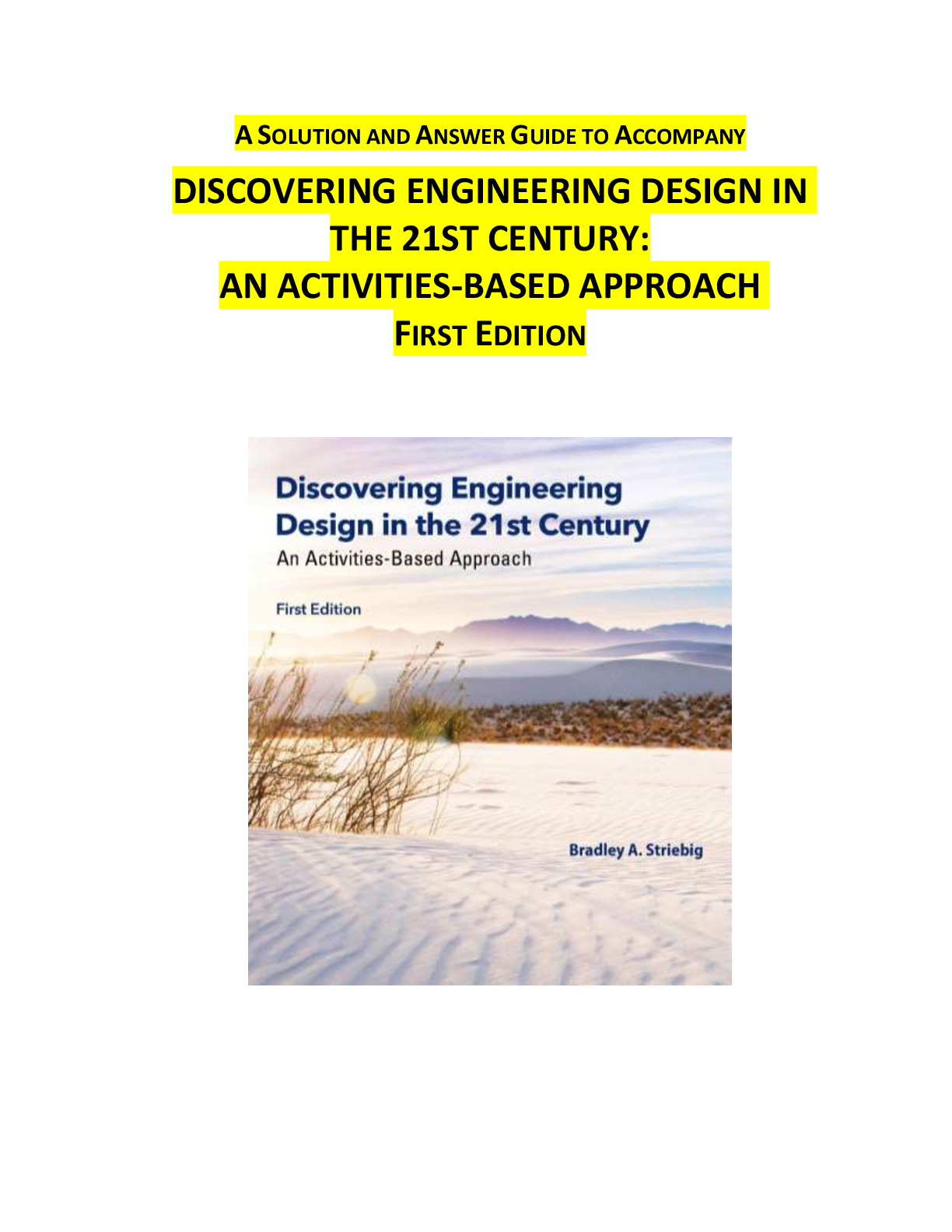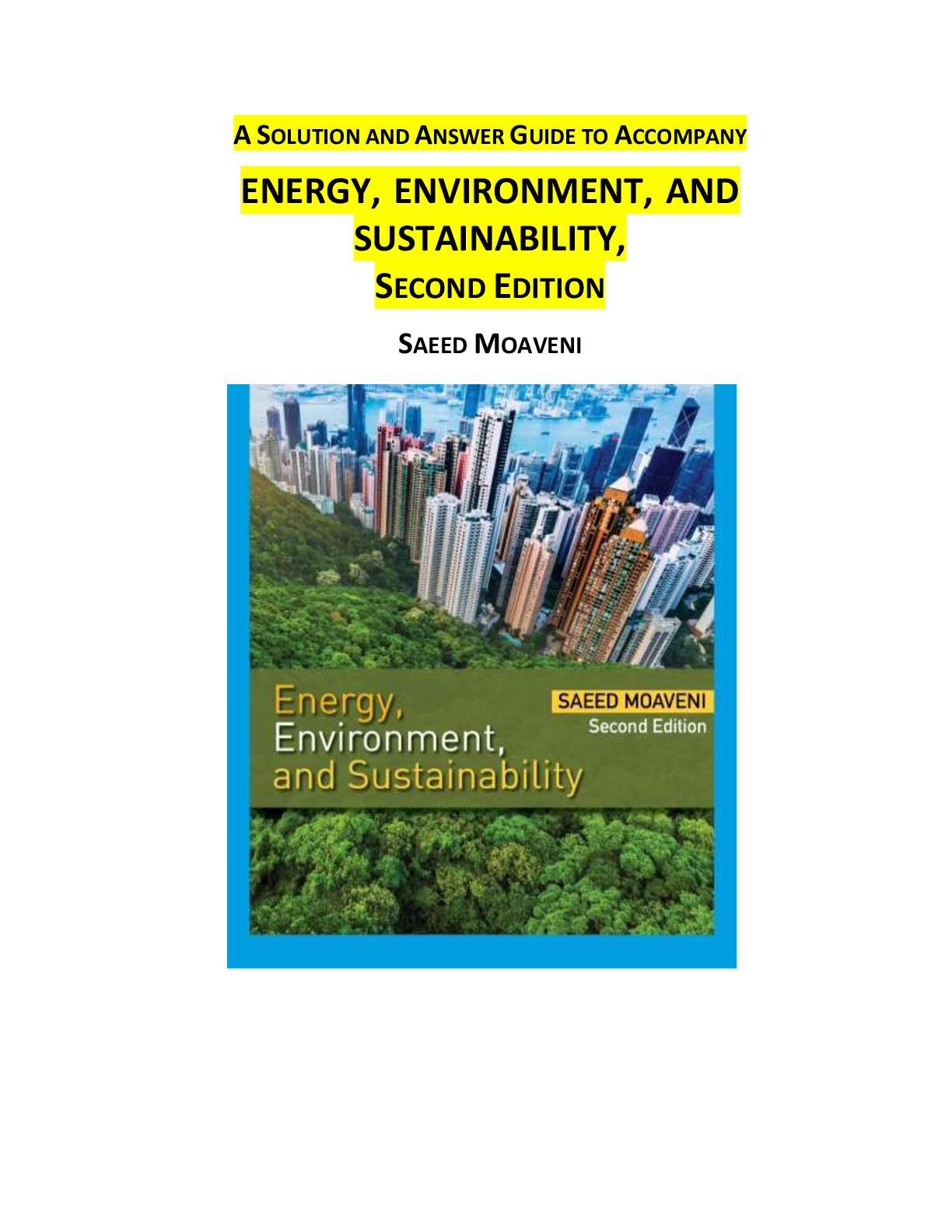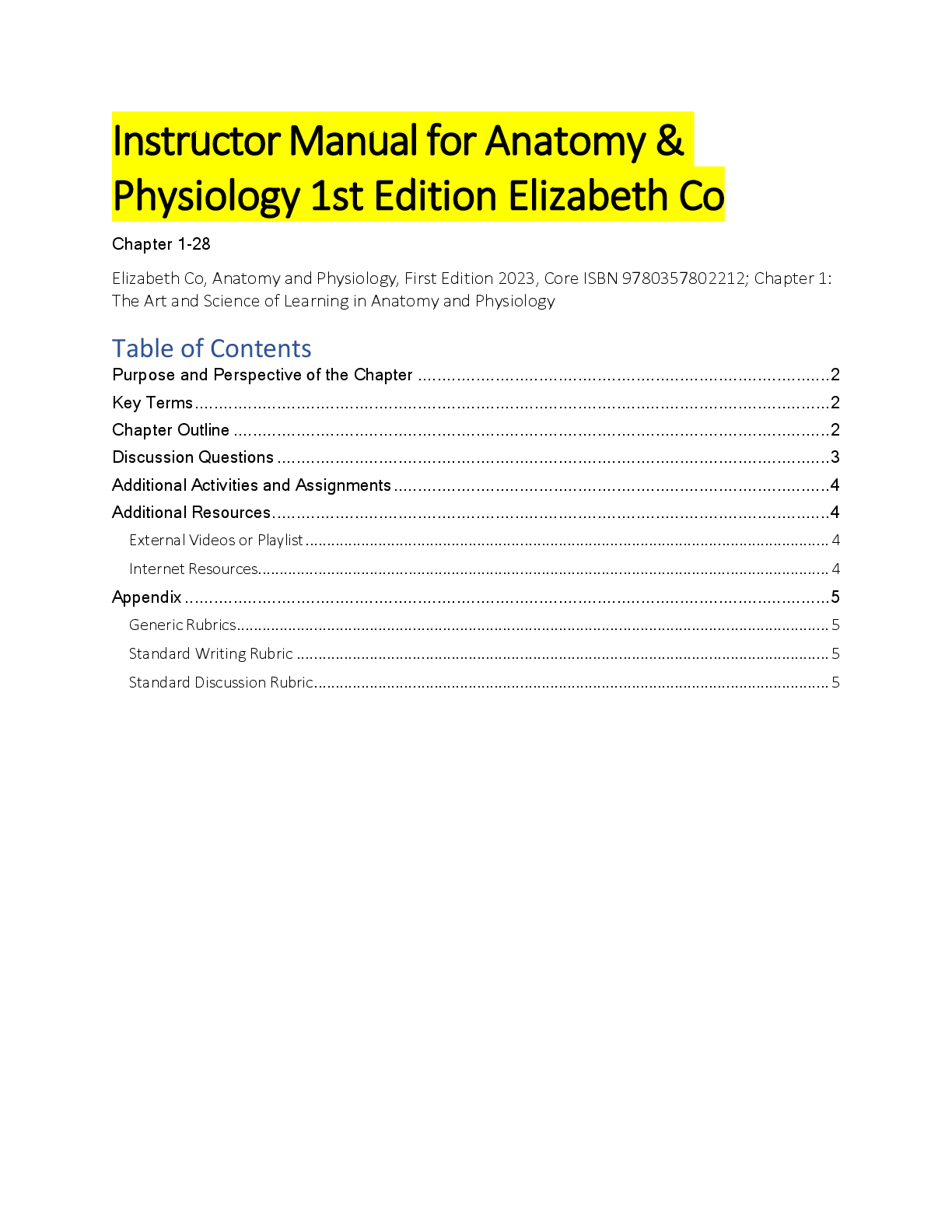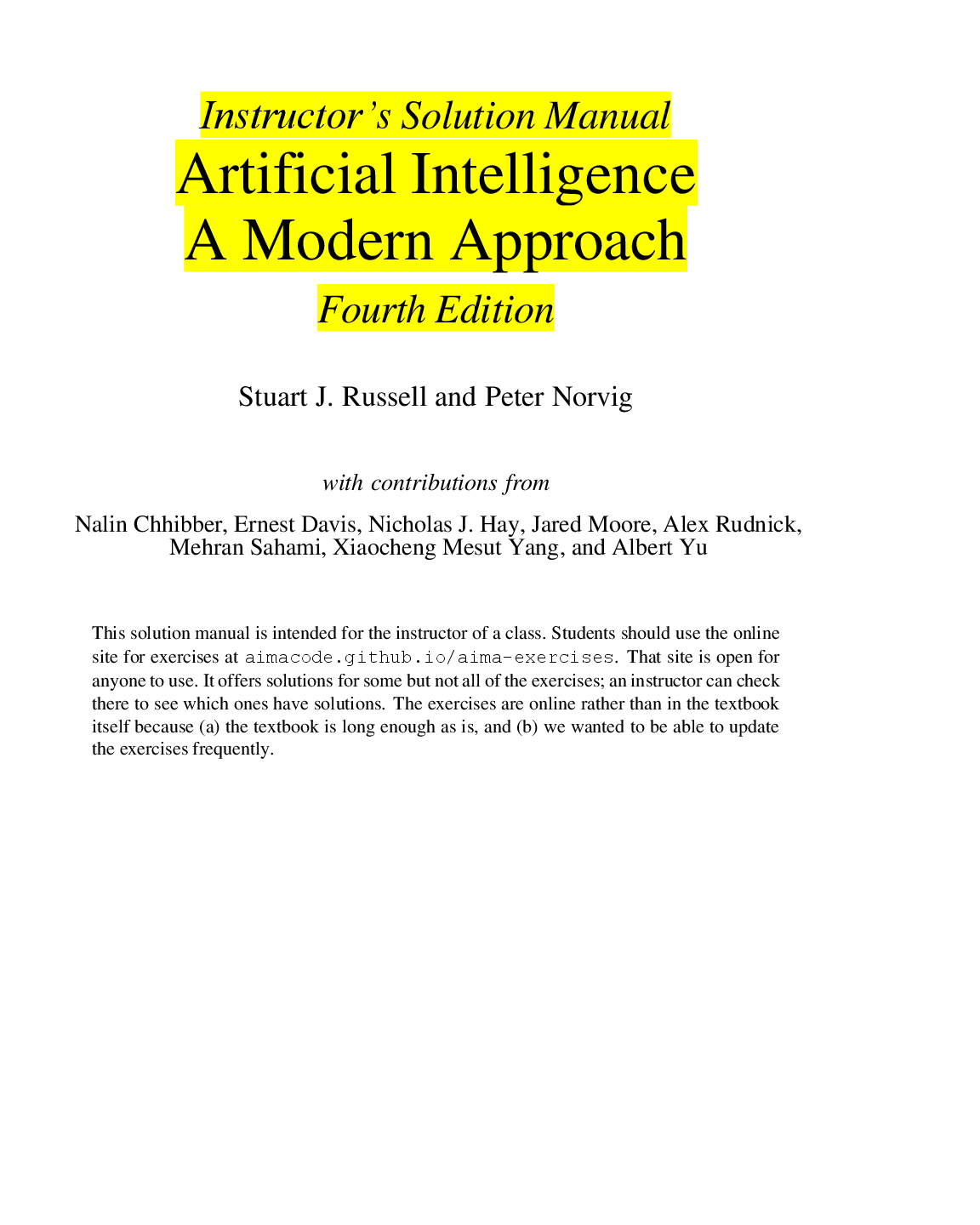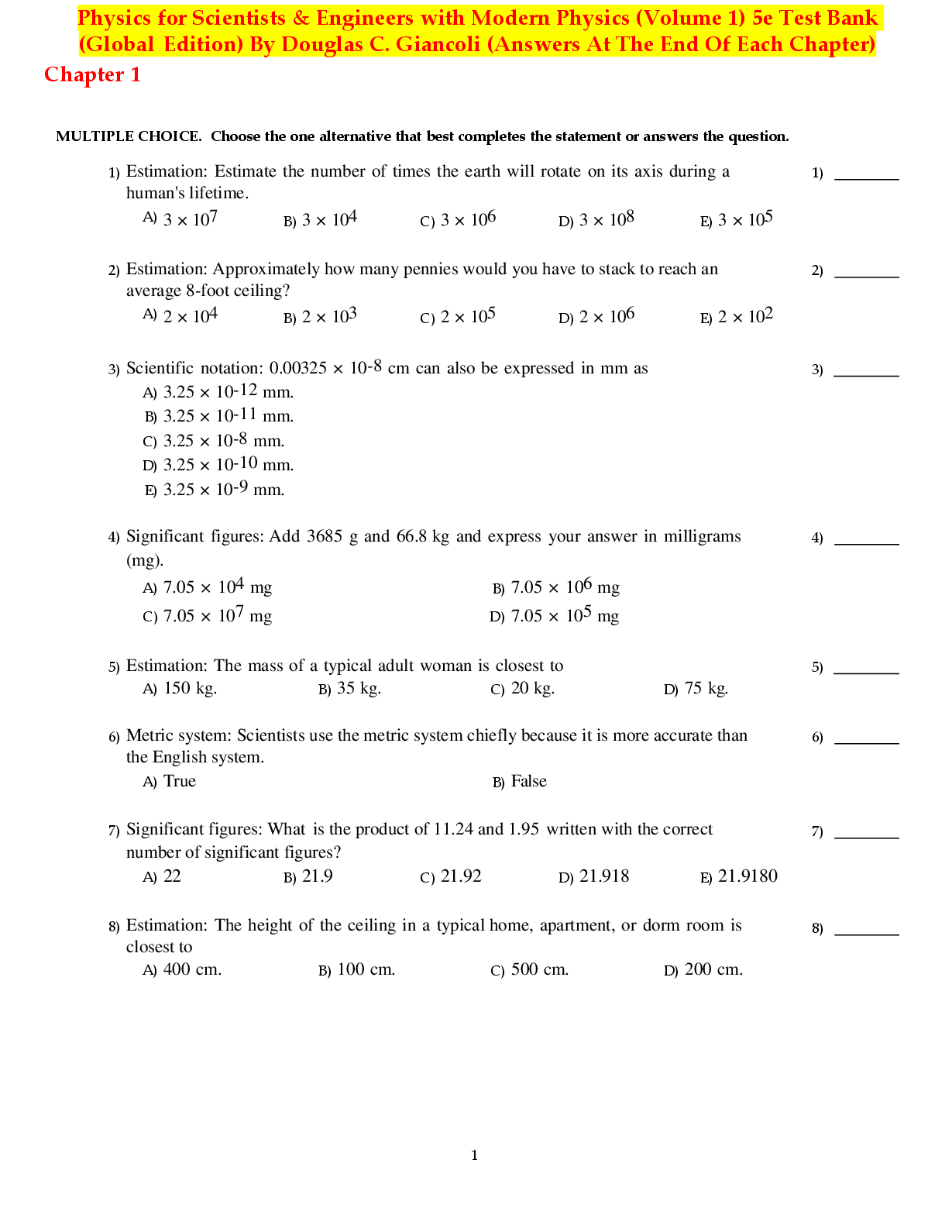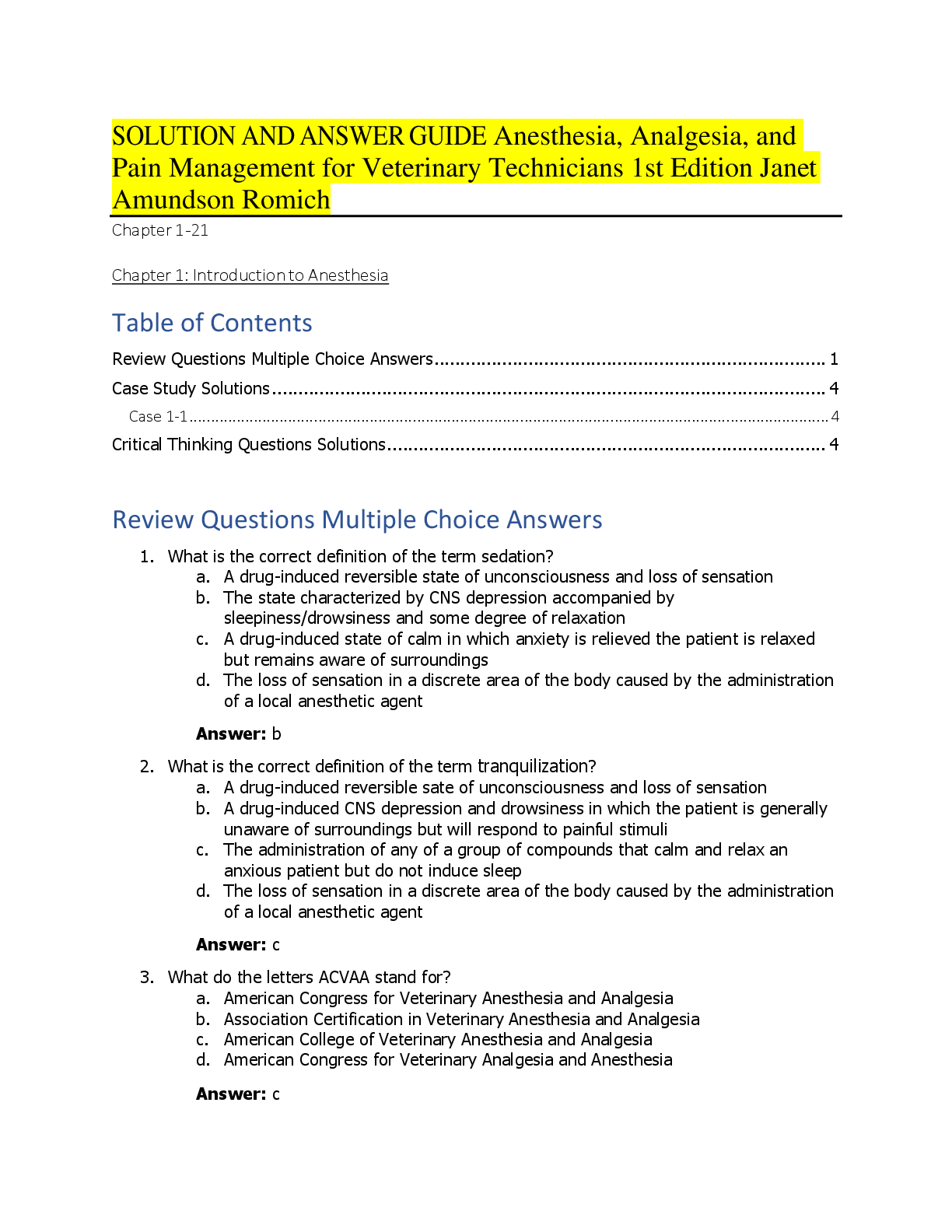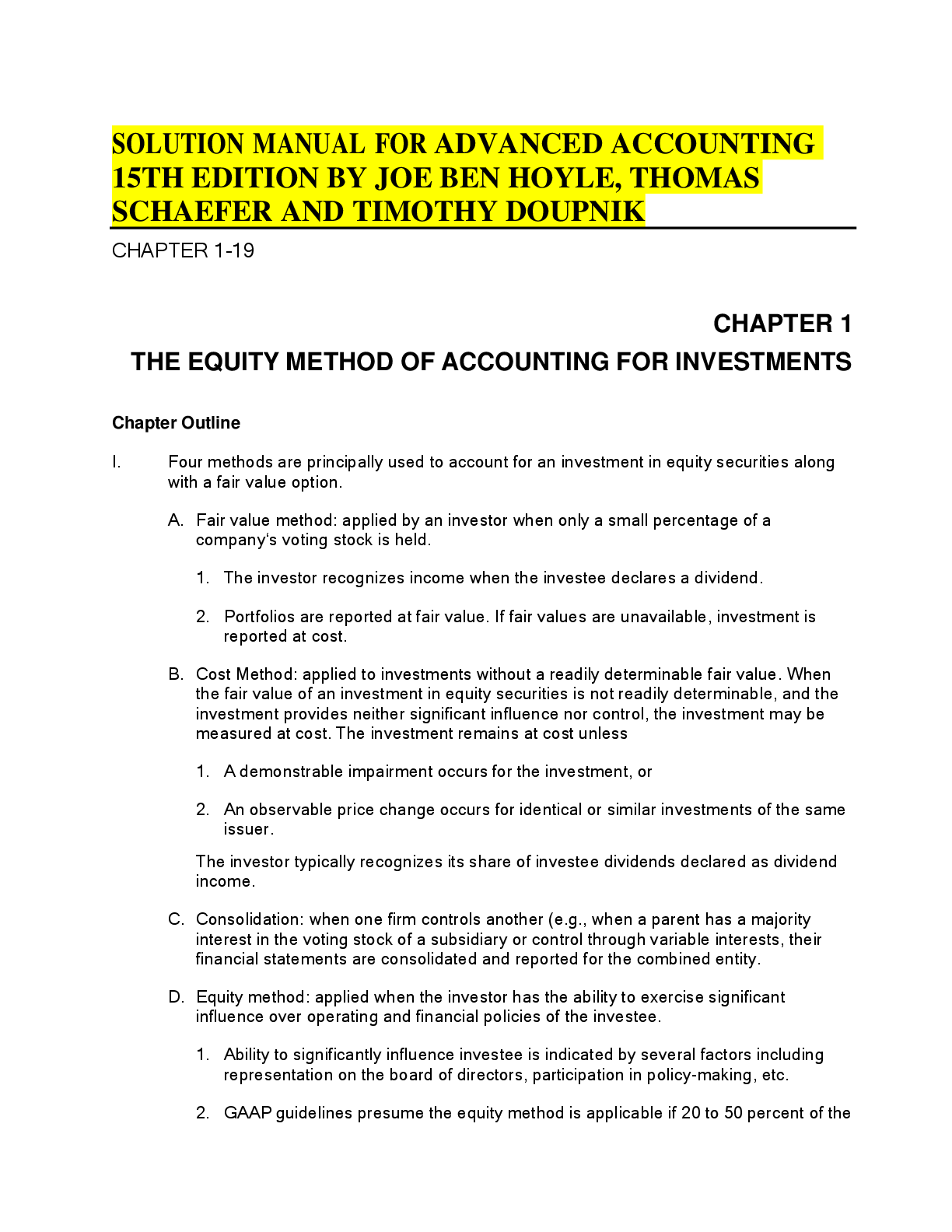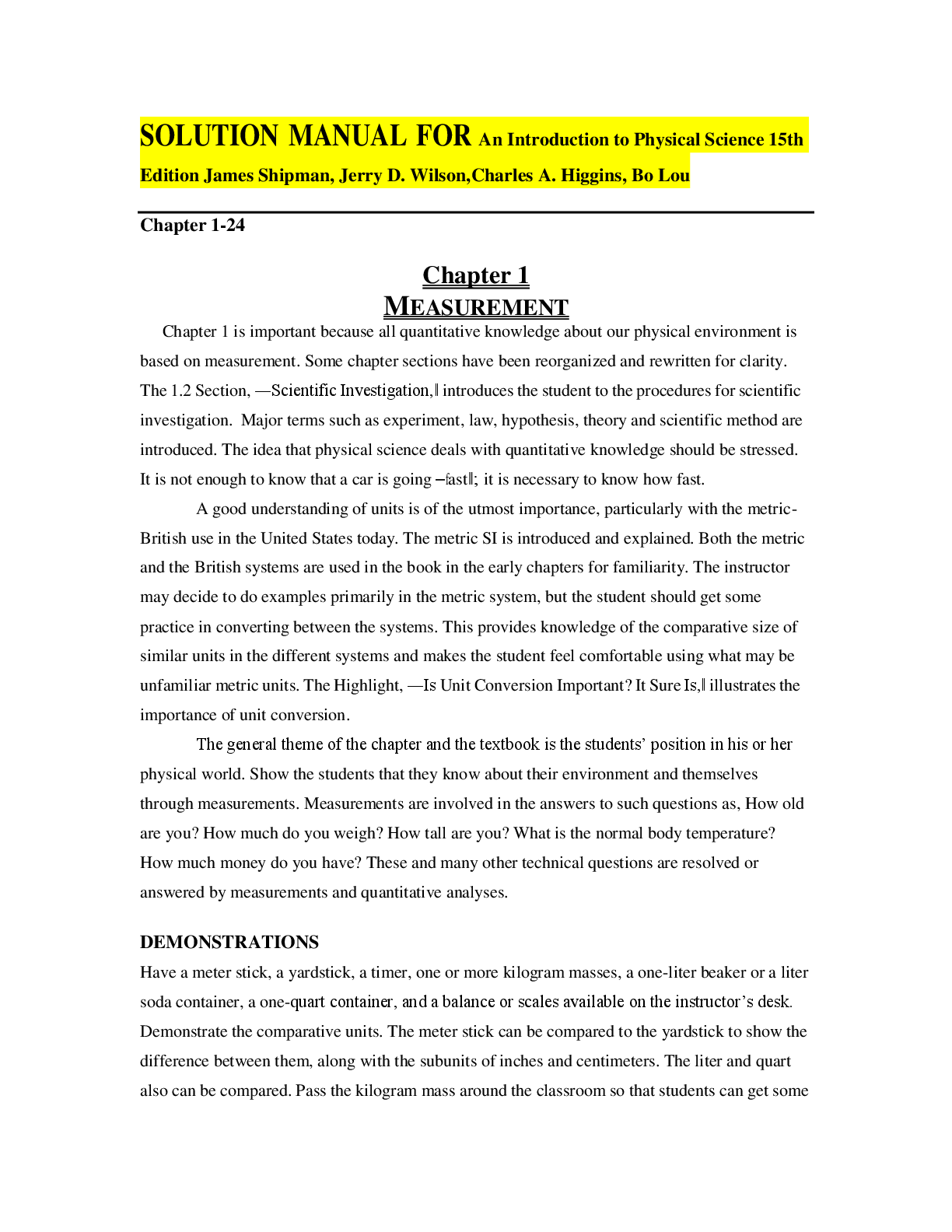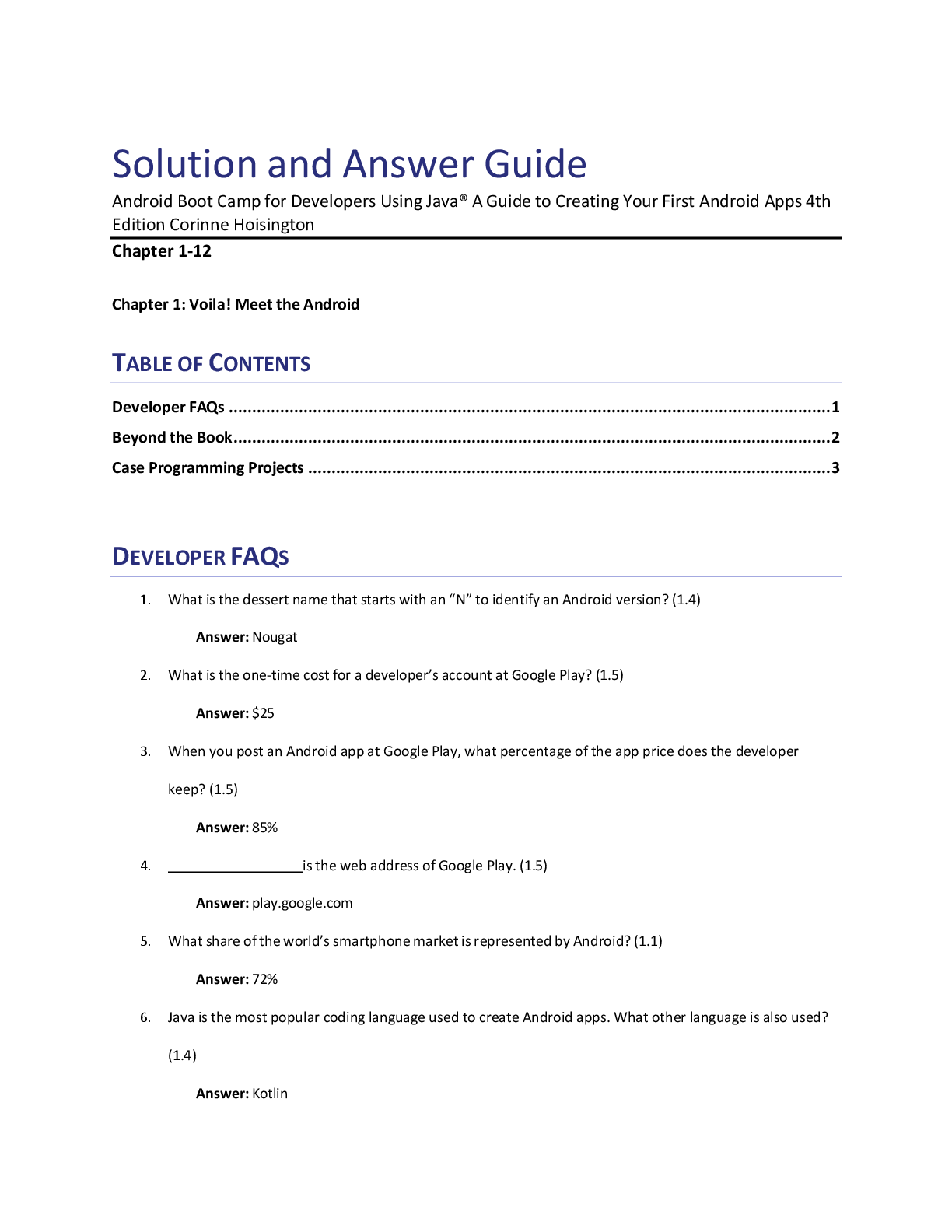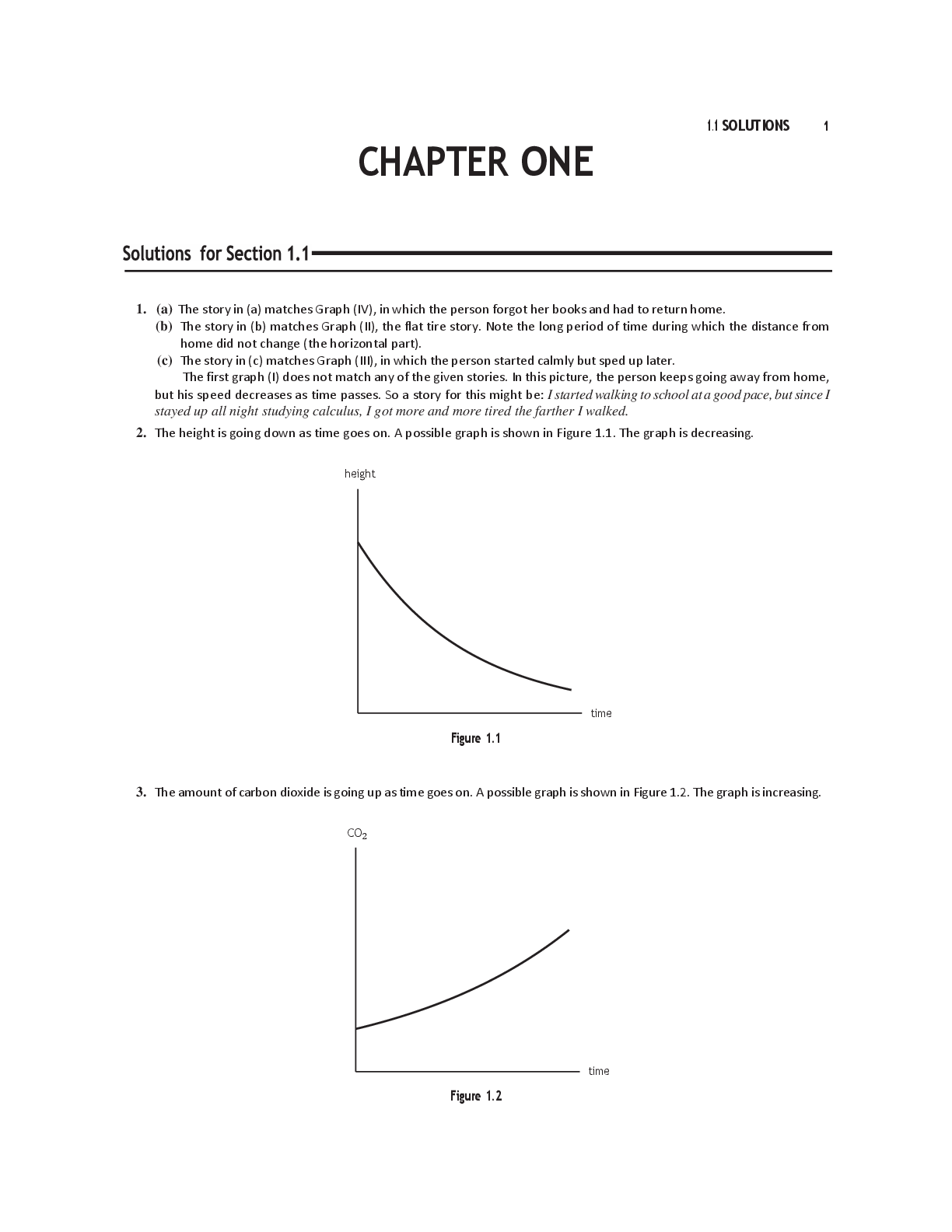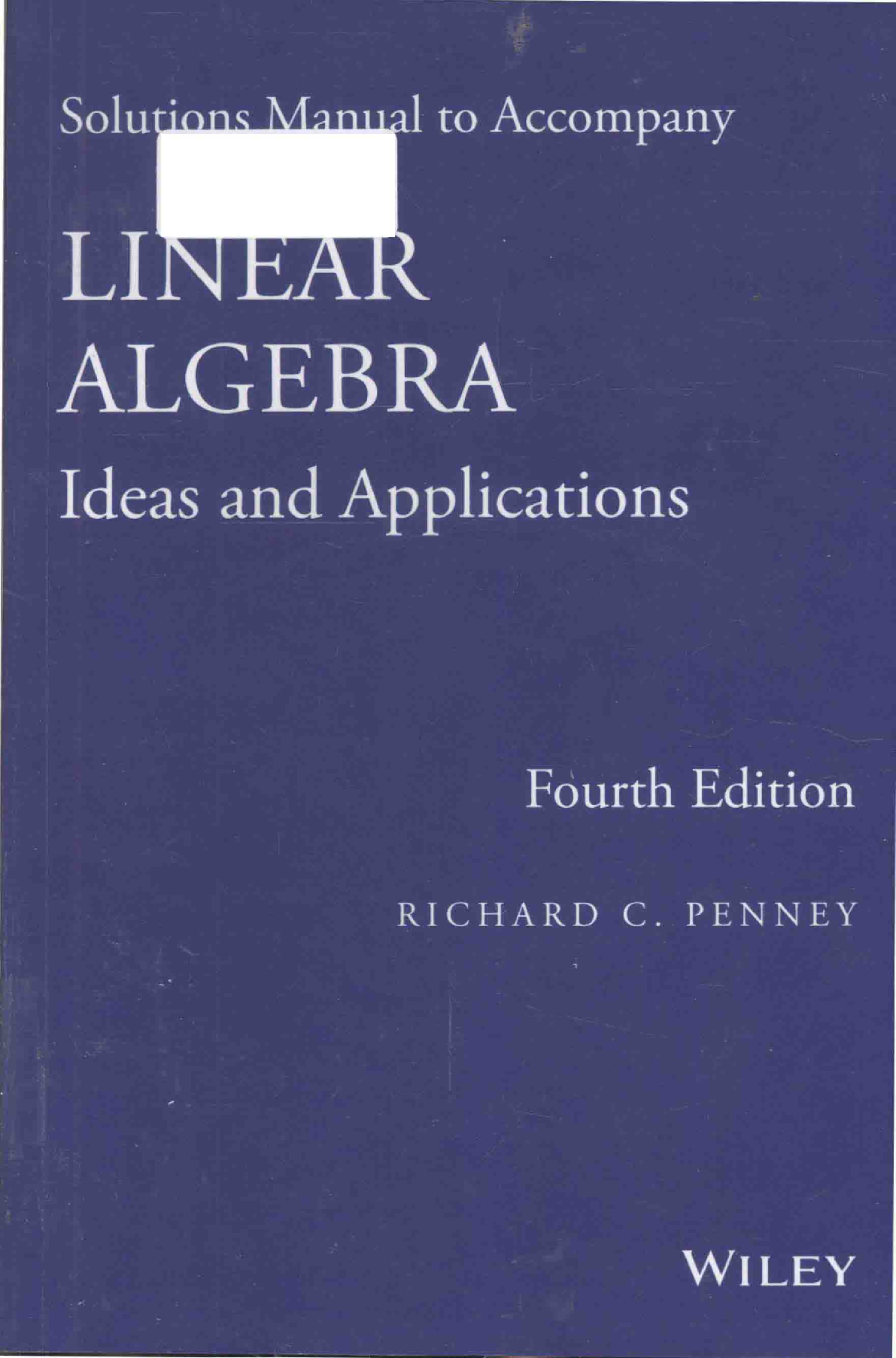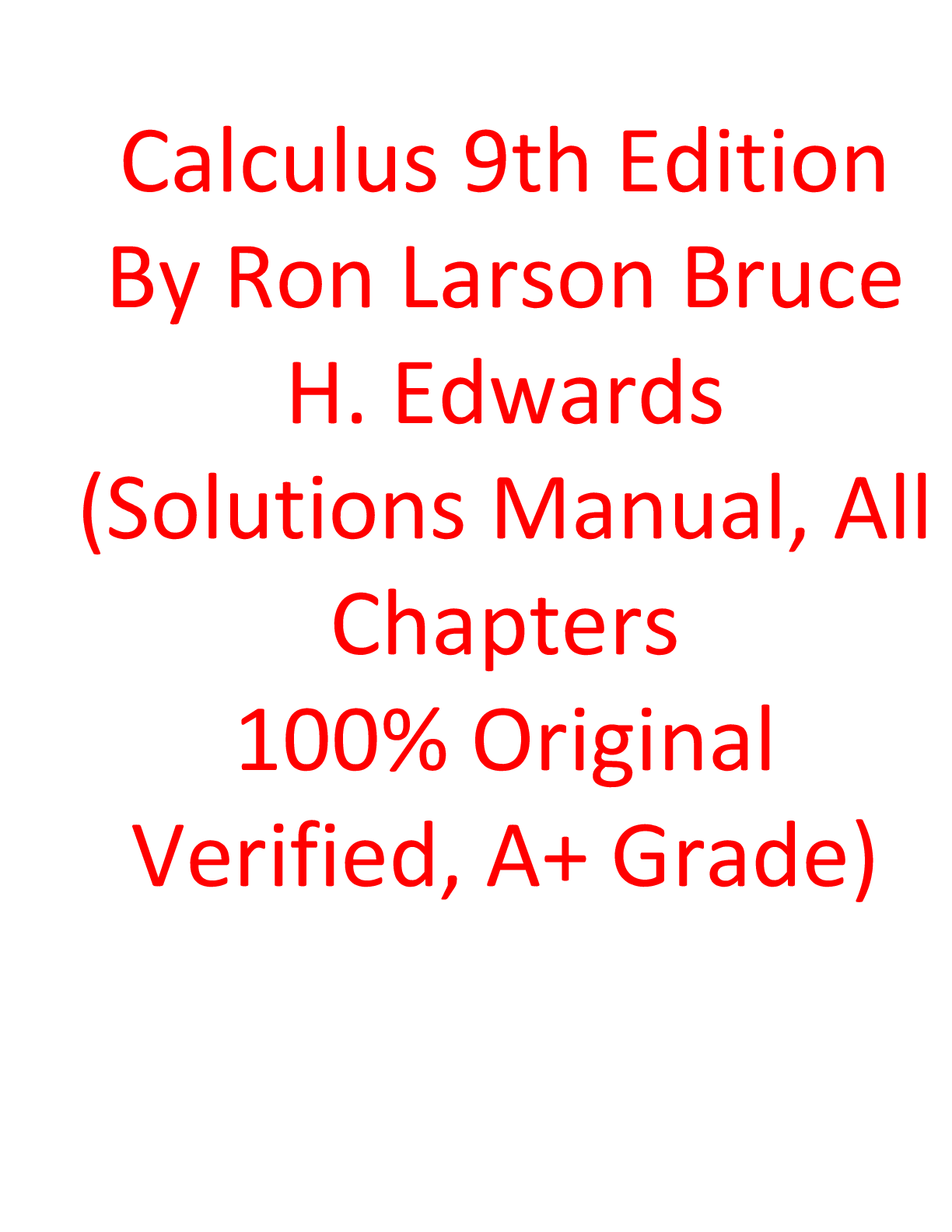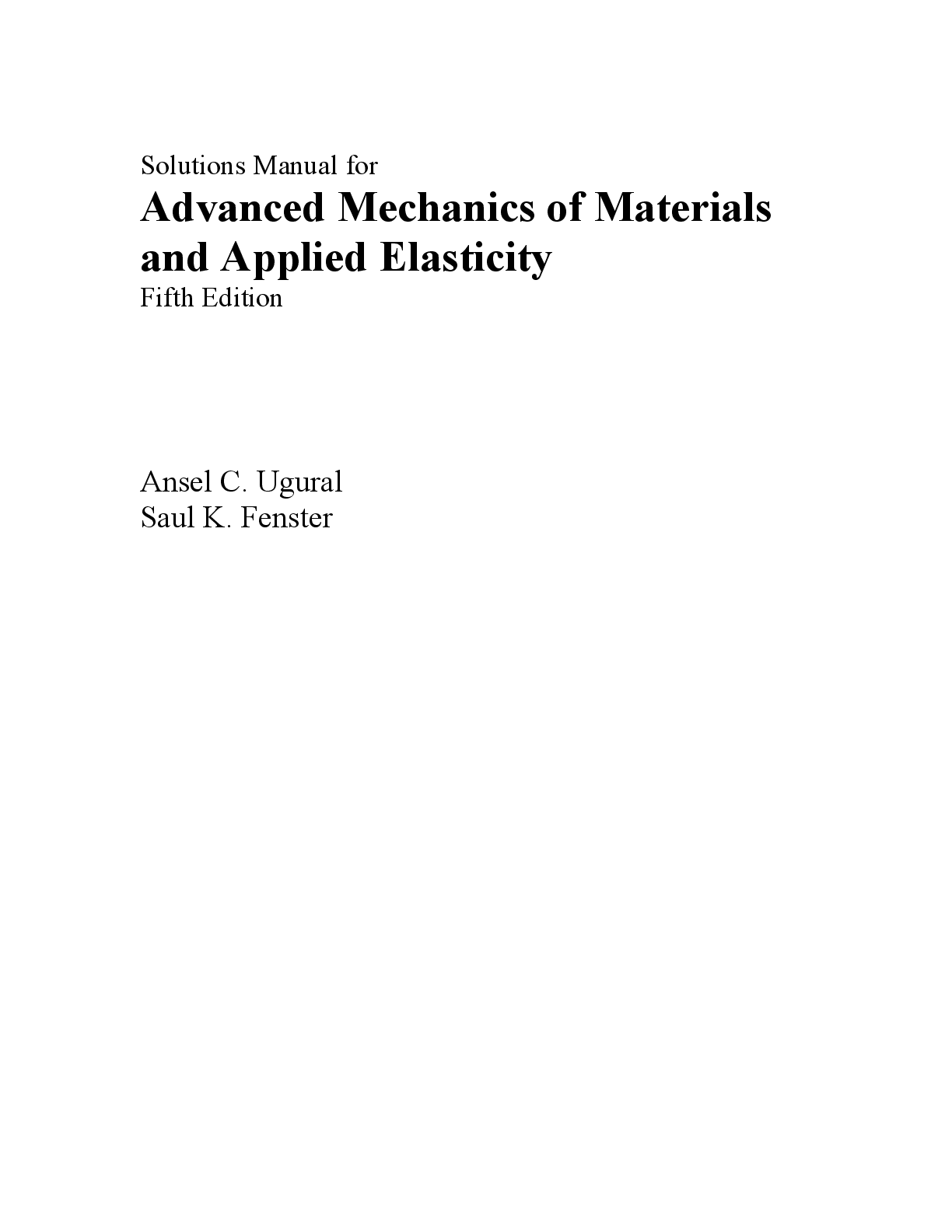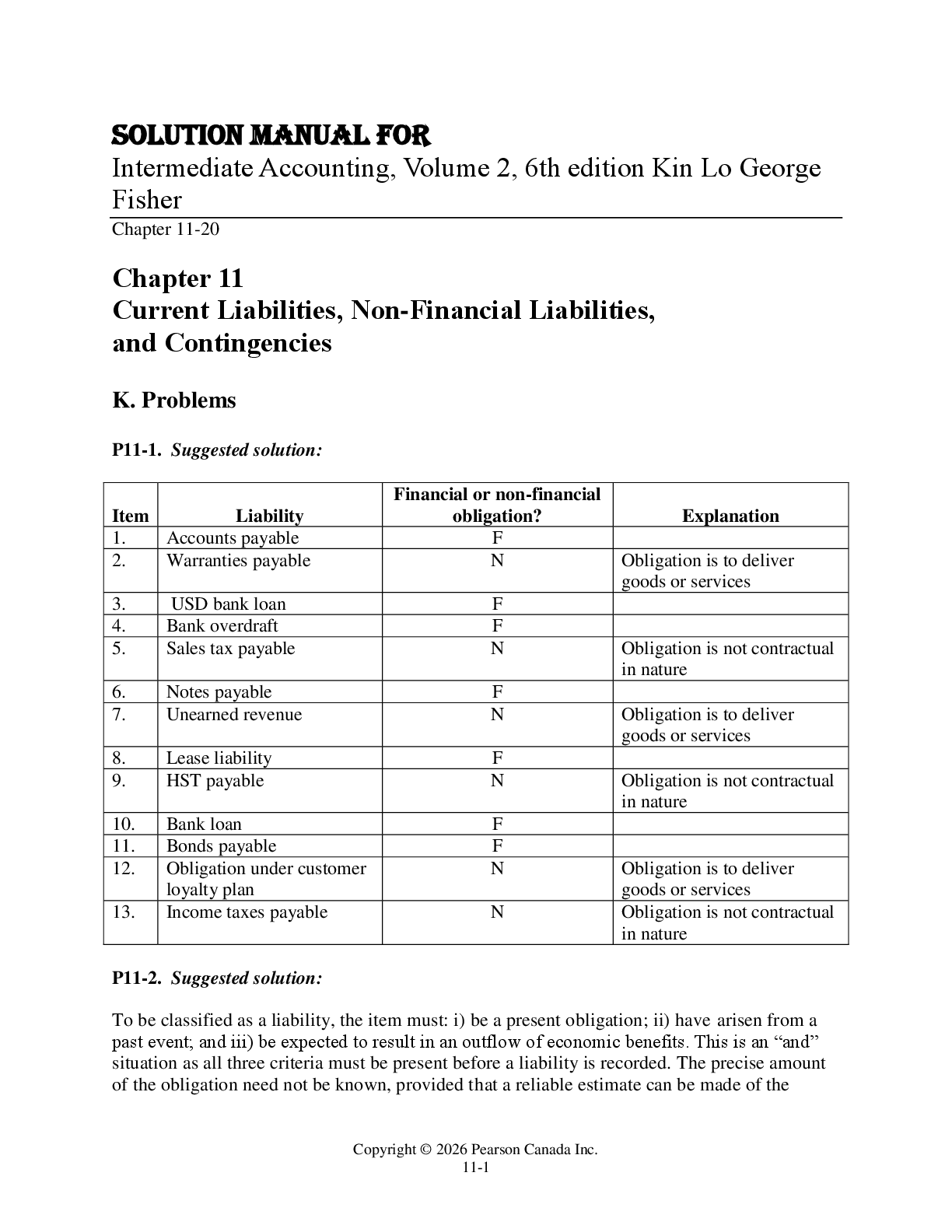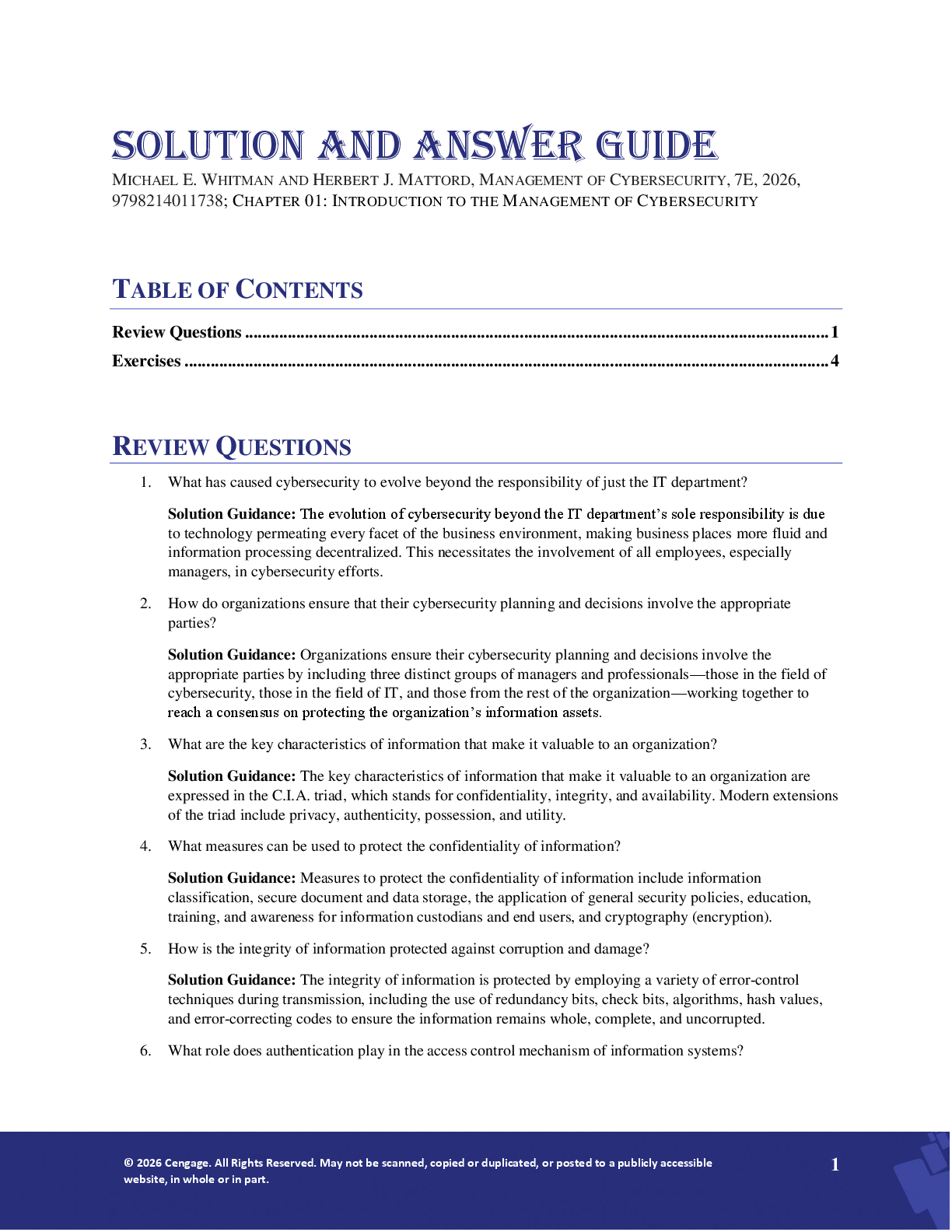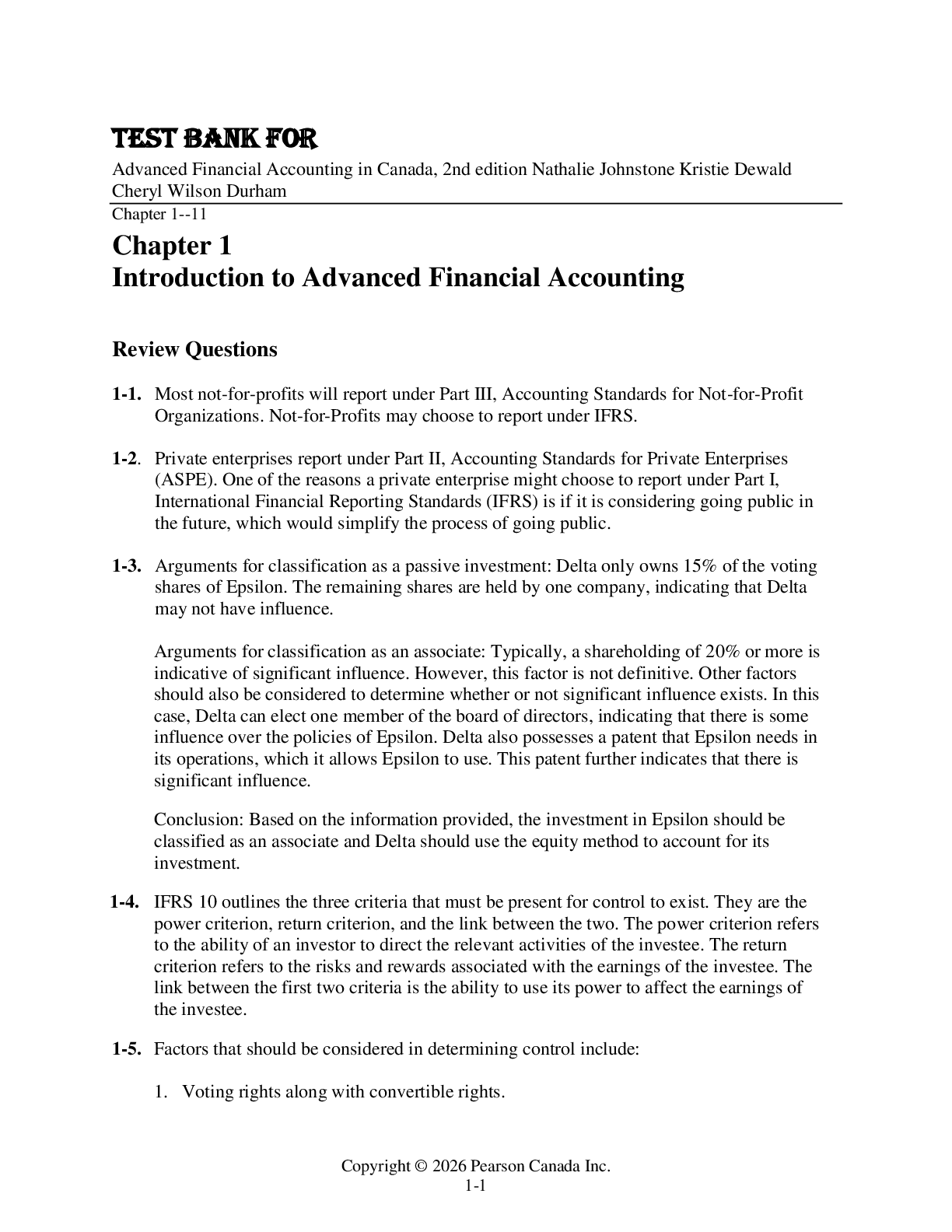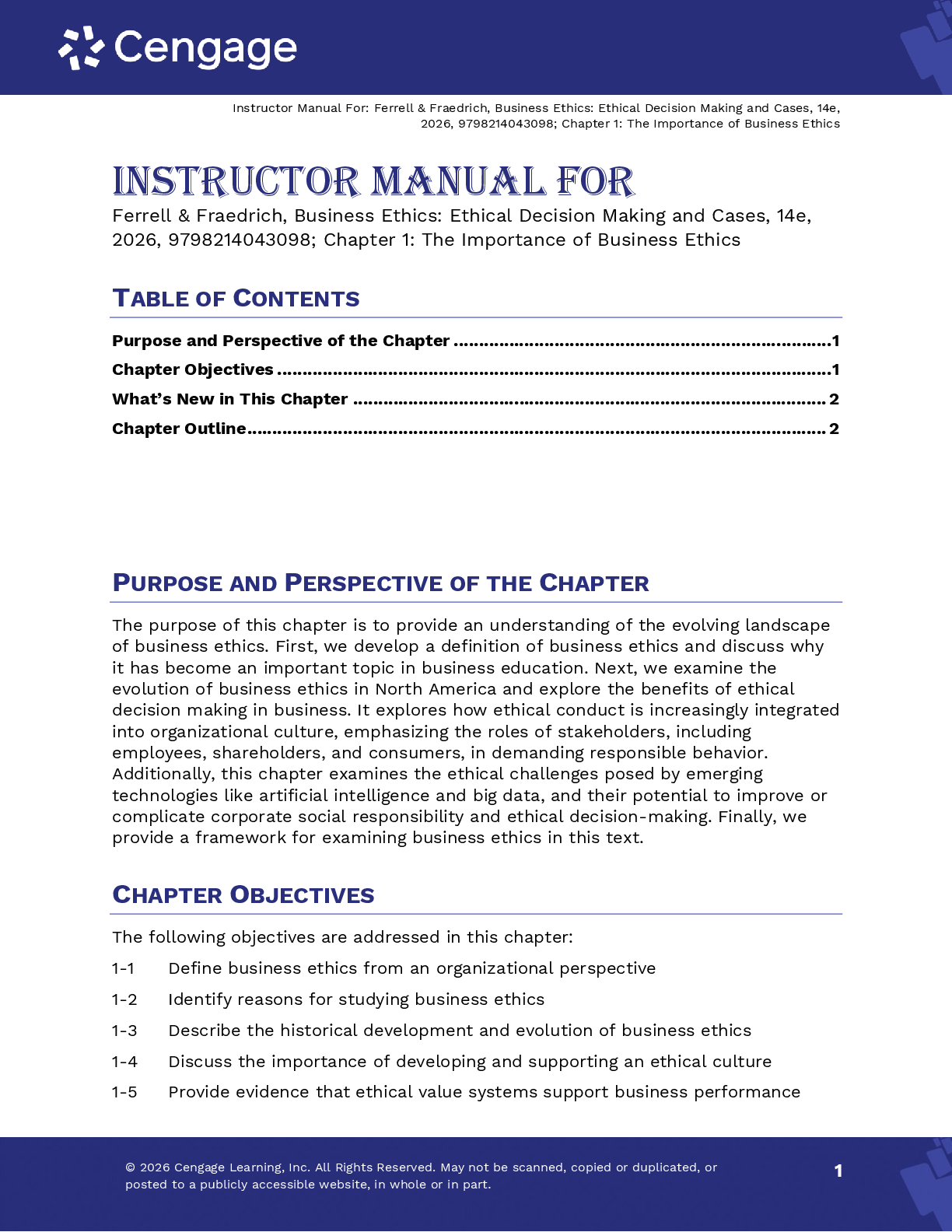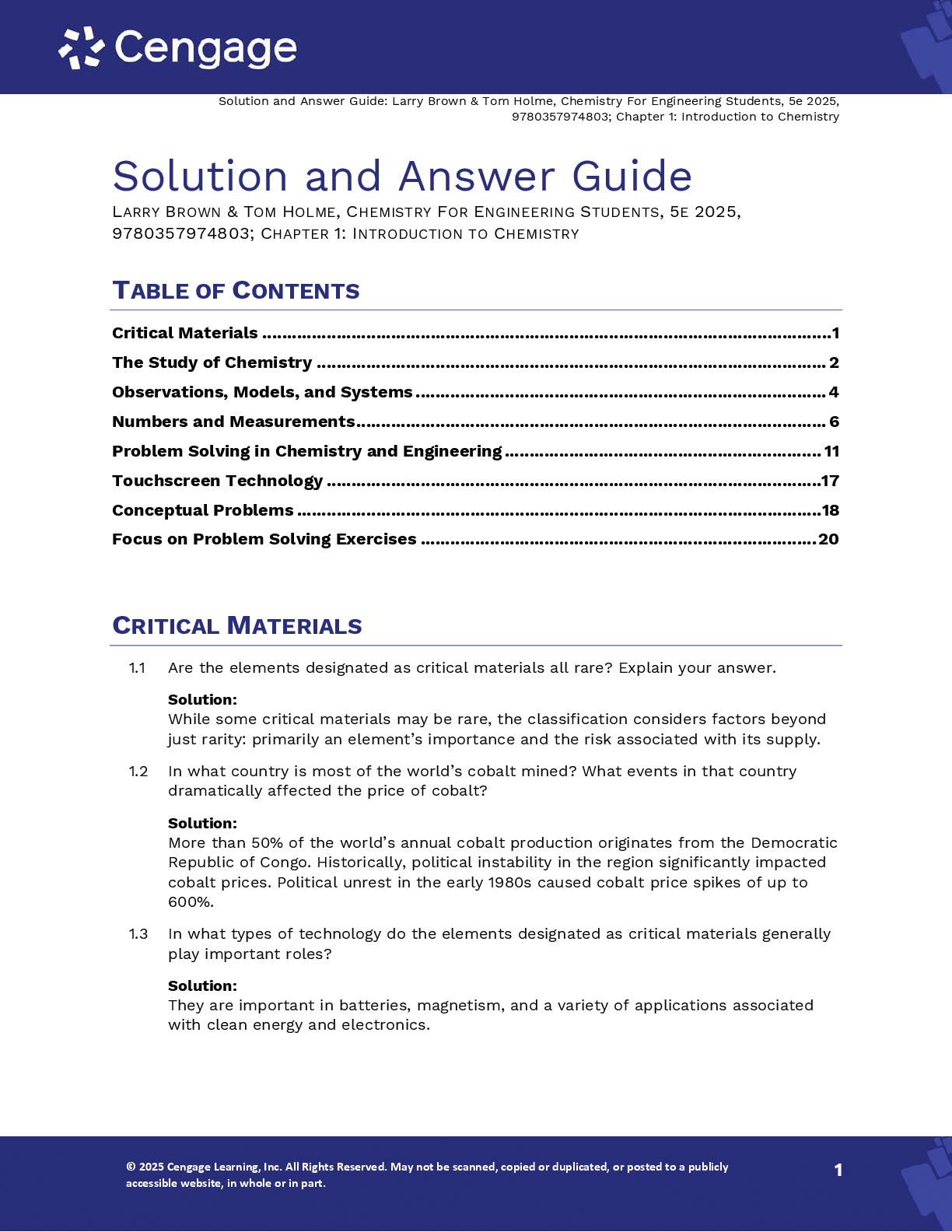Physics > SOLUTIONS MANUAL > Solutions Manual For Physics for Scientists & Engineers with Modern Physics (Volume 3) 5e (Global Ed (All)
Solutions Manual For Physics for Scientists & Engineers with Modern Physics (Volume 3) 5e (Global Edition) By Douglas C. Giancoli
Document Content and Description Below
Solutions Manual For Physics for Scientists & Engineers with Modern Physics (Volume 3) 5e (Global Edition) By Douglas C. Giancoli-1. No. Since the windowless car in an exceptionally smooth train movin ... g at a constant velocity is an inertial reference frame and the basic laws of physics are the same in all inertial reference frames, there is no way for you to tell if you are moving or not. The first postulate of the special theory of relativity can be phrased as “no experiment can tell you if an inertial reference frame is at rest or moving uniformly at constant velocity.” 2. The fact that you instinctively think you are moving is consistent with the relativity principle applied to mechanics. Even though you are at rest relative to the ground, when the car next to you creeps forward, you are moving backward relative to that car. 3. Since the railroad car is traveling with a constant velocity, the ball will land back in his hand. Both the ball and the car are already moving forward (relative to the ground), so when the ball is thrown straight up into the air with respect to the car, it will continue to move forward at the same rate as the car and fall back down to land in his hand. 4. Whether you say the Earth goes around the Sun or the Sun goes around the Earth depends on your reference frame. It is valid to say either one, depending on which frame you choose. The laws of physics, though, won’t be the same in each of these reference frames, since the Earth is accelerating as it goes around the Sun. The Sun is nearly an inertial reference frame, but the Earth is not. 5. The starlight would pass at c, regardless of your spaceship’s speed. This is consistent with the second postulate of relativity, which states that the speed of light through empty space is independent of the speed of the source or the observer. 6. The clocks are not at fault and they are functioning properly. Time itself is actually measured to pass more slowly in moving reference frames when compared to a rest frame. Any measurement of time (heartbeats or decay rates, for instance) would be measured as slower than normal when viewed by an observer outside the moving reference frame. 7. Time actually passes more slowly in the moving reference frame, including aging and other life processes. It is not just that it seems this way–time has actually been measured to pass more slowly in the moving reference frame, as predicted by special relativity. 8. This situation is an example of the “twin paradox” applied to parent–child instead of to twins. This situation would be possible if the woman was traveling at high enough speeds during her trip. Time would have passed more slowly for her and she would have aged less than her son, who stayed on Earth. (Note that the situations of the woman and son are not symmetric; she must undergo acceleration during her journey.) 9. You would not notice a change in your own heartbeat, mass, height, or waistline. No matter how fast you are moving relative to Earth, you are at rest in your own reference frame. Thus, you would not notice any changes in your own characteristics. To observers on Earth, you are moving away at 0.6c, which gives = 1.25. If we assume that you are standing up, so that your body is perpendicular to the direction of motion, then to the observers on Earth, it would appear that your heartbeat hasslowed by a factor of 1/1.25 = 0.80 and that your waistline has decreased by a factor of 0.80 (due to time dilation and length contraction). Your height would be unchanged (since there is no relative motion between you and Earth in that direction). Also note the comments in Section 36–9 of the text on “Rest Mass Physics for Scientists & Engineers with Modern Physics, 5e, Global Edition Instructor Solutions Manual 1 v 2 c 2 and Relativistic Mass” for comments about mass change and relativity. Your actual mass has not changed. 10. Yes, they do occur. However, at a speed of only 90 km/hr, v very close to one, so the effects would not be noticeable. c is extremely small, and therefore γ is 11. Length contraction and time dilation would not occur. If the speed of light were infinite, v c would be 0 for all finite values of v, and therefore γ would always be 1, resulting in t t 0 and l l 0 . 12. Both the length contraction and time dilation formulas include the term 1 v 2 c 2 . If c were not the limiting speed in the universe, then it would be possible to have a situation with v c. However, this would result in a negative number under the square root, which gives an imaginary number as a result, indicating that c must be the limiting speed. Also, assuming the relativistic formulas were still correct, as v gets very close to c, an outside observer should be able to show that l l 0 is getting smaller and smaller and that the limit as v c is l 0. This would show that c is a limiting speed, since nothing can get smaller than having a length of 0. A similar analysis for time dilation should show that t t o is getting longer and longer and that the limit as v c is t . This would show that c is a limiting speed, since the slowest that time can pass is that it comes to a stop. 13. If the speed of light was 25 m/s, then we would see relativistic effects all the time, something like the Chapter opening figure or Figure 36–16 with Question 21. Everything moving relative to us would be length contracted and time dilation would have to be taken into account for many events. There would be no “absolute time” on which we would all agree, so it would be more difficult, for instance, to plan to meet friends for lunch at a certain time. Many “twin paradox” kind of events would occur, and the momentum of moving objects would become very large, making it very difficult to change their motion. One of the most unusual changes for today’s modern inhabitants of Earth would be that nothing would be able to move faster than 25 m/s, which is only about 56 mi/h. 14. No. The relativistic momentum of the electron is given by p mv mv . At low speeds (compared to c) this reduces to the classical momentum, p mv. As v approaches c, γ approaches infinity so there is no upper limit to the electron’s momentum. 15. No. To accelerate a particle with nonzero rest mass up to the speed of light would require an infinite amount of kinetic energy, according to Eq. 36–10a, and so is not possible. 16. No, E = mc2 does not conflict with the conservation of energy, it actually completes it. Since this equation shows us that mass and energy are interconvertible, it says it is now necessary to include mass as a form of energy in the analysis of energy conservation in physical processes. 17. Every observer will measure the speed of a beam of light to be c. Check it with Eq. 36–7d. “Away” from the Earth is taken as the positive direction, so “towards” the Earth is the negative direction. [Show More]
Last updated: 8 months ago
Preview 5 out of 271 pages

Loading document previews ...
Buy this document to get the full access instantly
Instant Download Access after purchase
Buy NowInstant download
We Accept:

Reviews( 0 )
$15.50
Can't find what you want? Try our AI powered Search
Document information
Connected school, study & course
About the document
Uploaded On
Mar 25, 2025
Number of pages
271
Written in
All
Additional information
This document has been written for:
Uploaded
Mar 25, 2025
Downloads
0
Views
37

